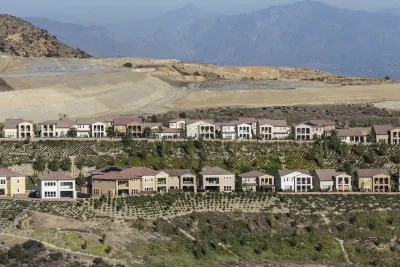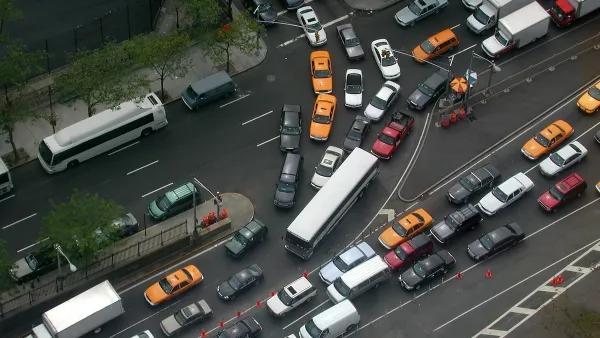While the state continues to rely on driving as a primary means of transportation, fighting climate change and the worsening housing crisis means implementing policies that encourage infill development, higher density, and public transit.

Director of the UCLA Institute of Transportation Studies (ITS) Brian Taylor describes results from ITS research analyzing how transportation and housing policies in California can shift to meet the state's climate goals and encourage more sustainable development. "Policies favoring driving over other means of getting around have for decades received little scrutiny, even as many of our metro areas have grown to where traffic congestion is now endemic. It’s no wonder that the transportation sector accounts for more than 40 percent of all of the state’s greenhouse gas emissions, and cars for about three-quarters of that."
"Building primarily around the car consumes a lot of land, costs a lot of money, and generates a lot of emissions," writes Taylor. "Indeed, our diverse panel of interviewed experts mostly called for metropolitan and transportation planning to become more urban-focused and shift to a less sprawling, car-dependent future."
The study highlighted the need for deprioritizing cars, boosting housing density, and improving public transit options in central cities. "Beyond the state’s urban cores, suburbs will need to fill in rather than spread out further into fire-prone areas."
Taylor notes that "Even in small towns and rural areas, new developments should be constructed to make it easier for people to park once and walk to multiple destinations, rather than driving from parking lot to parking lot in developments strung along roadways."
Taylor acknowledges that "old habits die hard" and changing entrenched patterns of urban development won't happen overnight—but today's policy decisions will drive future results.
FULL STORY: Don’t let the California Dream become a transportation nightmare

Analysis: Cybertruck Fatality Rate Far Exceeds That of Ford Pinto
The Tesla Cybertruck was recalled seven times last year.

National Parks Layoffs Will Cause Communities to Lose Billions
Thousands of essential park workers were laid off this week, just before the busy spring break season.

Retro-silient?: America’s First “Eco-burb,” The Woodlands Turns 50
A master-planned community north of Houston offers lessons on green infrastructure and resilient design, but falls short of its founder’s lofty affordability and walkability goals.

Test News Post 1
This is a summary

Analysis: Cybertruck Fatality Rate Far Exceeds That of Ford Pinto
The Tesla Cybertruck was recalled seven times last year.

Test News Headline 46
Test for the image on the front page.
Urban Design for Planners 1: Software Tools
This six-course series explores essential urban design concepts using open source software and equips planners with the tools they need to participate fully in the urban design process.
Planning for Universal Design
Learn the tools for implementing Universal Design in planning regulations.
EMC Planning Group, Inc.
Planetizen
Planetizen
Mpact (formerly Rail~Volution)
Great Falls Development Authority, Inc.
HUDs Office of Policy Development and Research
NYU Wagner Graduate School of Public Service




























